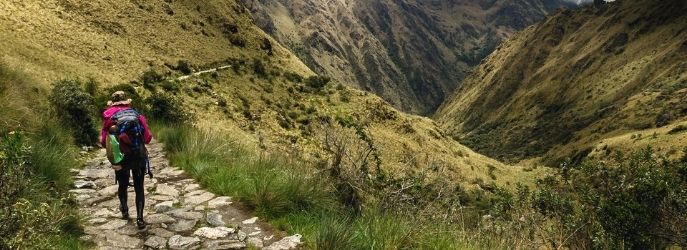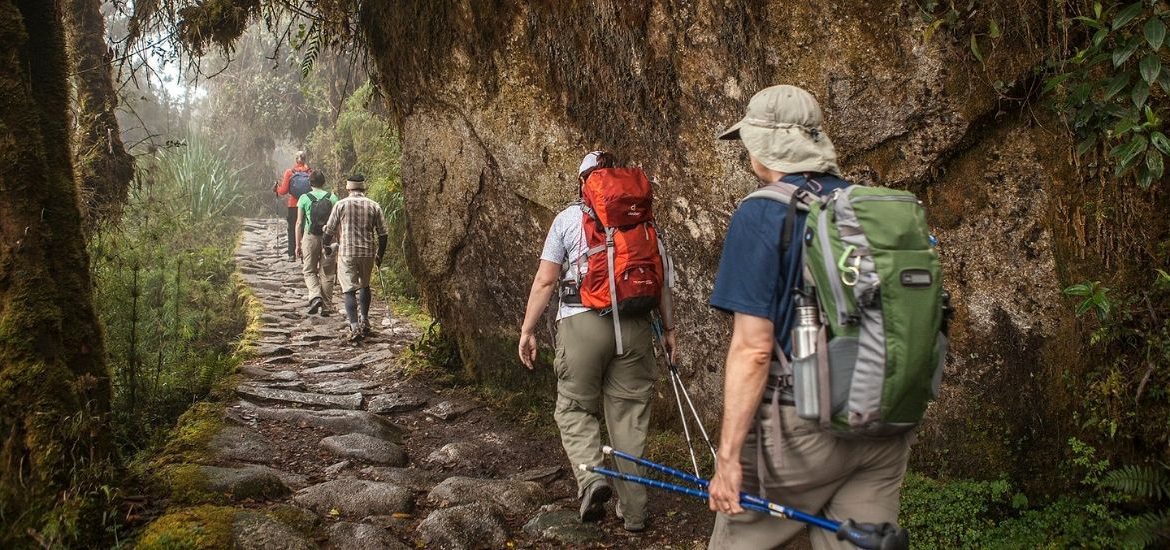The Classic Inca Trail is the most in-demand alternative to get to Machu Picchu, and how not to since it comprises the ancient route the Incas used to take to arrive at the Inca citadel. This historical trail extends to nearly 40 km and takes you through different ecosystems, which is why you must know how to pack your bags with the essentials.
In case you may not know, this route is not an easy task, it will take you to altitudes over 4,000 meters above sea level and its steep inclines doesn’t make it any bearable. It all comes down to mental and physical preparation to finish the Inca Trail, so it’s best to know everything about it long before committing to it.
Keep in mind that you’ll walk 12 kilometers a day on average and preparing the perfect packing list is key to have a stress-free and comfortable experience. However, the porters and muleteers will take care of all the camping and kitchen equipment, including your duffle bag; leaving you with just a day backpack.
There are many things to take into consideration, which is why we have prepared this segment to help you organize the ultimate packing list for the Inca Trail!
Clothing For the Inca Trail

If you’re thinking about what to wear on the Inca Trail, we recommend you to keep things easy and simple. Consider wearing layers of clothes since they can be more versatile along the route, the weather can be quite unpredictable so it’s optimal to be prepared for anything.
To help you with that, here we have gathered some suggestions regarding clothing for the Inca Trail:
- Base Layer. We recommend bringing 2 top and 1 bottom base layers for this trek. The first layer consists of high wicking materials to facilitate moisture transfer and it’s best if they fit snugly to the skin.
- Trekking Shirts. Make sure to pack at least three short-sleeve shirts and one long-sleeve shirt for the trek. Do not bring cotton shirts as these absorb moisture, choose a polyester material instead since those dry easily.
- Trekking Shorts and Trousers. Bring 1 or 2 hiking trousers and shorts, although it would be ideal if you get convertible trousers since those are better to save space and significantly more versatile.
- Underwear. We recommend bringing at least 4 pairs of breathable sports underwear. Make sure to pick a brand that specifically focuses on manufacturing products that can cope with sweat from high-intensity sports.
- Hard Shell Jacket or Rain Poncho. You’ll never know what you’ll encounter along the trail, so it’s best to be prepared with a hard shell jacket or a compact poncho rain-suit especially during the rainy season.
- Insulated Jacket. You’ll definitely need this to keep you warm during the chilly nights at the campsite and possibly during the trail though you might get warm as you make your way through the Andes and the high jungle.
- Sunhat & Sunglasses. Remember that the sun is really aggressive at these altitudes and you better be prepared for that as well. You’ll need a hat that provides face and neck sun protection and it would be better if it can be easy to fold so it fits in your backpack.
- Beanie. Temperatures get really cold during the early mornings and the evenings, so make sure to bring one or two to keep your ears warm.
- Hiking Boots. This is the most important gear for your trek, so make sure to find some good hiking boots that fit you well. If purchasing them for the first time, take some time to try the boots and see if they are as comfortable as you need them to be.
- Hiking and Thermal Socks. We recommend bringing at least 3 pairs of hiking socks as they provide good breathability (do not use cotton as those will lead to blisters). Also, don’t forget to bring at least 1 pair of thermal socks for the cold nights at the camp.
Personal Gear & Medications

As we mentioned earlier, the porters and muleteers will take care of the camping and kitchen equipment and the rest of your luggage, so there’s no need to worry about that, except for the sleeping bag and your personal items. Here’s a list with the essentials for this trek:
- Sleeping Bag. Most Inca Trail packages do not include the sleeping bag in the price, so you’ll have to get a good and warm sleeping bag as the nights can get freezingly cold. However, you can usually rent it from the same company or some trekking gear shop in Cusco.
- Trekking Poles. We recommend bringing a pair of trekking poles that are retractable and easy to store. Remember that there will be steep inclines along the route and this gadget can reduce the impact on your knees and leg joints significantly.
- Headlamp. The campsites do not have electricity or are poorly lit, so it would be best if you could get a headlamp. Also, some operators include an early visit to Machu Picchu on the fourth day, which means you’ll be walking before sunrise.
- Reusable Water Bottle or Hydration Bladder. Keeping yourself hydrated is key to avoiding any altitude sickness symptoms, so make sure to bring either of these for the trail. Most Inca Trail operators provide water at the campsite before and after the trek.
- Camera and Extra Batteries. We bet this is the first thing that comes to mind while thinking about what to bring for the Inca Trail, and yes, you’ll definitely need this since the scenery along the trail is hallucinating.
- Waterproof Ziplock Bags. These will be useful to keep your important and valuable items safe.
- Small locks. To protect your belongings in your duffle bag.
- Trekking Towel. Make sure to get a quick-drying towel for the trek, a small to medium sized will do the job.
- Sunscreen and Lip Balm. Remember, protecting your skin should be imperant along the trail. So make sure to pack a high SPF sunscreen and a lip balm to avoid cracked lips due to cold temperatures.
- Baby Wipes and Hand Sanitizer. Great for disinfecting and cleaning hands before and after eating, or when they get dirty during the hike.
- Toiletries. As toilet paper, toothbrush, toothpaste, travel soap, shampoo and others.
- Altitude Sickness Medication. You can get Diamox (acetazolamide) in almost any drugstore in Peru and it’s sold over the counter. This medicine helps to prevent altitude sickness but keep in mind that it doesn’t cure it.
- General Medications. Make sure to bring paracetamol or aspirin for headaches, which are common in high-altitude places, and imodium for diarrhea. Also, make sure to talk to your travel operator if you have any pre-existing conditions that they should know about.
- Insect Repellent and After-Bite. These are undeniably mandatory, you surely won’t like being harassed by mosquitos during the night or along the trail.
- Cash. To tip porters, guides and cooks if you want. As well as paying for shower access and other things that you might need (if available).
- Passport. You’ll need it to enter the Inca Trail and Machu Picchu.
- A small backpack. To carry just the essentials for the day and leave the rest in your duffle bag with the porters and muleteers along with your sleeping bag.
Yes, these lists are long but it’s best to be prepared for everything than being in the middle of the Inca Trail without any of these items. To help you organize everything without forgetting any details, make sure to do a checklist of everything you need and pack according to what you’ve seen here and what you consider it’s important for you.
We want you to have a fun but also safe experience, so make sure to know everything about how to deal and prevent altitude sickness for this trek.
Also, for those planning the perfect itinerary to Peru, we have the best options on itineraries and travel packages including the Inca Trail that you should know about! Dare to discover the mystical land of the Incas with Viagens Machu Picchu.

